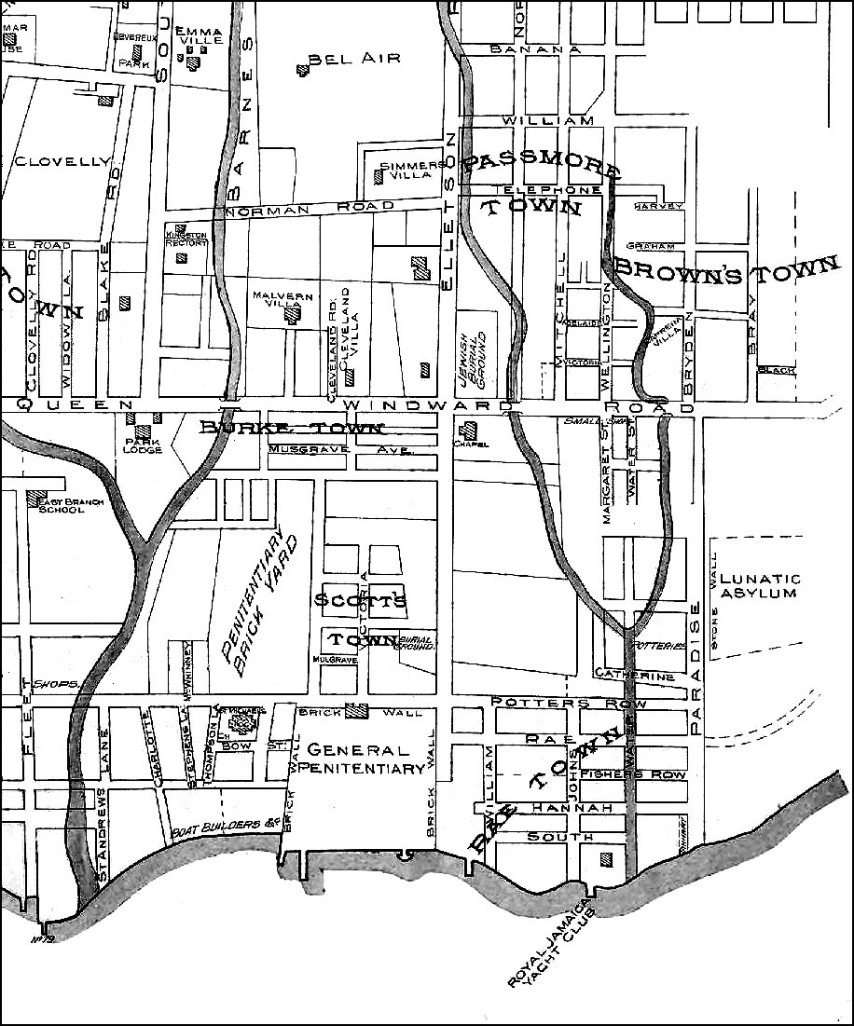rae town
Sheila Duncker, 'The free people of colour and their fight for civil rights in Jamaica, 1800 to 1830', thesis,
University of London, 1956/1960
p. 15-6
One of the interesting characteristics of Kingston at this time [early 19th-century] was the growing number of
free blacks. Senior observed this: "numbers of free Negroes have fixed themselves into various parts of the
city and particularly about the suburbs where they keep very disorderly houses principally for the reception
and entertainment of sailors." (B.M. Senior, Jamaica as it is and as it may be, London, 1835, p. 122.) One of
these new subdivisions was Rae Town. Two enterprising merchants, John Hannah and William Rae between
1807 and 1819 sold lots to thirteen people of whom eleven were black; the remaining two customers were "a
free brown woman" and "a free man of colour."
(Persons who bought land in Rae Town:
Elizabeth Lewis. "a free black woman" bought land for £36 on 24th Feb. 1807.
William Brooks. "a free black man" bought land for £30 on 23rd March 1807.
John Goldson. "a free black man" bought land for £25 on 10th September 1807.
Joseph Thomas. "a free black man" bought land for £150 on 21st January 1808.
James O'Brien "a free black man" bought land for £150 on 28th September 1812.
Robert Flyn. "a free black man" bought land for £32 on 21st November 1814.
Mary Davis. "a free brown woman "bought land for £60 on 31st August 1815.
Charles Puma. "a free man of colour" bought land for £30 on 1st October 1816.
Margaret Francis [sic] Reed "a free black woman" bought land for £35 on 17th June 1818.
Catherine Thomas "a free black woman" bought land for £25 on 20th November 1818.
Jane Thomas "a free black woman" bought land for £35 on Feb. 17th 1819.
Source: A Jamaica Kingston Register of Freehold. 1803-1832.)

from an 1890s' map


